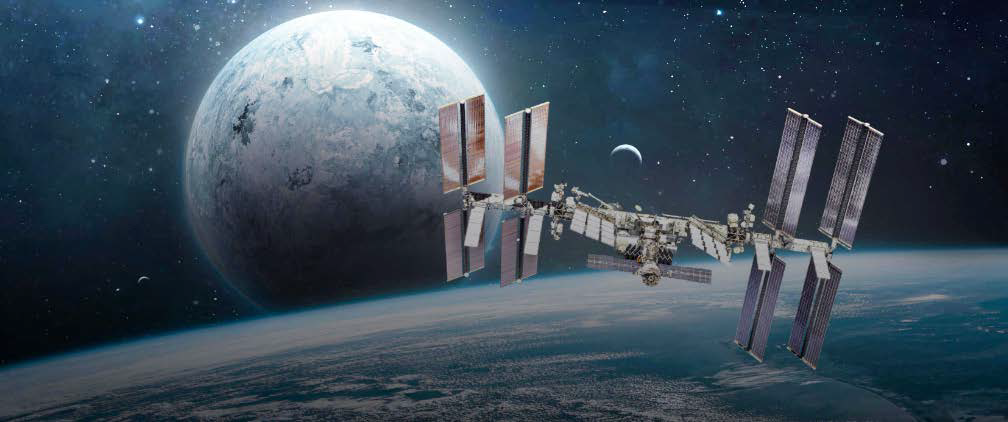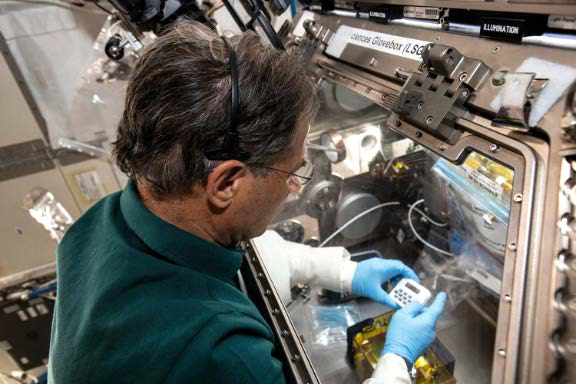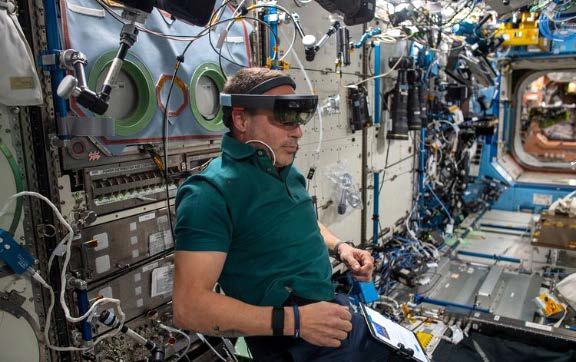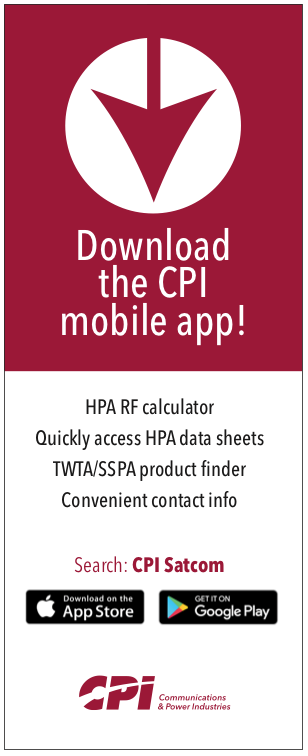The remote and harsh environment of space has been a driving force in the development of much of the technology that impacts our daily lives, and the same is starting to be true across biological research and healthcare. As the space economy matures, space has become a transformative tool used by other industries from manufacturing to quantum computing.

For biology, it has become increasingly evident that access to microgravity has profound impacts on biological science and medical device innovation. Where prior centuries have been defined by the Industrial Revolution and the Digital Revolution, the hundred years we are living today will be defined by the Biological Revolution, and it is clear that space has the potential to be a defining factor, alongside advances in computing, automation, and artificial intelligence (AI).
More than 600 people have now been to space, and more than 3,000 experiments have been conducted on the ISS, but research in Space Health is still largely theoretical. We know that prolonged periods of time in space cause muscle atrophy, bone density loss, immune dysfunction, cardiovascular dysfunction and remodeling, vision degradation, increased risk of cancer, and changes in telomere length, but effective countermeasures are largely unknown. Many of those who go to space also suffer from space motion sickness, dulled thinking as well as changes in mood; while some of this can be blamed on the remoteness and harshness of space, the lack of gravity plays a significant role and is much more difficult to address.
Space tourism, lunar exploration and missions to Mars — while technically feasible — greatly increase the biological challenges we face. Not only do systems need to be completely autonomous, but we need to account for a much wider range of human genetics and behaviors. Current countermeasures include hours of daily exercise and regular health monitoring that are cumbersome and may be difficult to maintain over long periods of time.
Astronauts today are given basic medical training and use tele-medicine to consult with doctors on Earth; when regular, synchronous communication isn’t possible, the need for complex, intelligent systems of medical care that can operate on local networks to monitor, diagnose, and suggest treatment will be critical.
Drugs expire, so any recommended pharmaceuticals will need to be manufactured onboard. Plus, although some minor animal surgeries in space have been completely successful, physical treatments need to be minimally invasive. There will be a critical need to safeguard human health and performance by monitoring and preventing, or effectively treating sleeplessness, cognitive and behavior conditions, as well as work overload. Redundancy can be built into systems, but human resources will be limited.
With challenge comes opportunity. As we increase access to space, we are able to advance Space Health as well as drive critical research that will better our life here on earth. From regenerative medicine to synthetic biology, from water treatment and food production to medical care in remote/resource poor areas, from autonomous testing and diagnosis to preventative medicine, space is going to transform terrestrial healthcare and help humankind be more resilient.
Many of the biological changes observed in space mimic those that take place during aging. This allows space to be leveraged as a powerful tool to advance the understanding of age-related illness. The effect on telomere length is an interesting example. Telomeres protect DNA from damage during cellular replication and example. Telomeres protect DNA from damage during cellular replication and shorten as we age; this shortening is associated with aging, cancer and increased risk of death. In space, telomeres appear to lengthen (though they shorten again upon return to Earth), providing a completely novel research opportunity. Cells that grow and divide without dying off are considered cancerous, so it’s unlikely that space itself is the fountain of youth, but therapies resulting from space research may well be an answer.
Changes in telomere length are thought to be caused by oxidative stress, but it’s microgravity that drives most of the physiological effects of space. In biological tissue, microgravity triggers disease-like symptoms and has the potential to become a valuable part of pre-clinical validation. Tissue chips, also called organs-on-chips, are one way that researchers are using space to study system-level disease and treatment responses today. Tissue chips are systems containing miniature tissues grown inside microfluidic chips that maintain cell microenvironments and tissue- specific functions and help us study function, structure and gene expression.

Stem cell research and the development of stem cell therapies are another key opportunity. Stem cells exhibit new behavior in space, and multiple studies have shown that many stem cells grow better in microgravity than in normal conditions. Traditional cell culture uses 100-year-old methods and requires cells to grow in a sheet on a petri dish, while space allows three-dimensional structures to form without scaffolds or matrices.
Stem cells are a critical part of biological research as they have the ability to self- renew and to develop into many different cell types. Stem cell therapy, also known as regenerative medicine, uses stem cells and their secreted factors to promote the repair of diseased, dysfunctional, or injured tissue. Stem cell therapy is being explored as a way to treat a wide range of genetic and acquired diseases and injuries, including type 1 diabetes, heart disease, and spinal cord injuries, among many others.
Synthetic biology, also known as synbio or biofabrication, is a field that has been rapidly advancing and maturing in recent years. It too will be accelerated by the growing space economy. It is critical to many aspects of space travel including nutritional therapies, new fuels and materials, and pharmaceutical production.
Synthetic biology designs and engineers DNA, allowing researchers and businesses to manufacture almost anything from microorganisms. Using biology in this way greatly reduces the need for raw materials and the production of waste. Synthetic biology also holds the potential to solve the greatest challenge of long distance space exploration: radiation. Radiation damages DNA, and there is not currently a way to block it or lessen the damage it causes. However, advances in synthetic biology are producing cellular and molecular tools that may be able to repair damaged genes in a very targeted way. Astronauts have successfully sequenced DNA on the ISS already, paving the way for this precision medicine.

It’s clear that space can greatly advance the biomedical industry terrestrially, but the biomedical industry may also help drive the space economy. With the development of private space stations and other uncrewed platforms, manufacturing in space becomes possible.
Microgravity is a powerful tool that can uncover hidden properties otherwise masked by gravity, but it also allows us to do some things that simply can’t be done at all here on Earth. Protein crystals, for example, play a critical role in drug discovery and delivery and represent a huge opportunity for the space economy. Even without controlling for temperature or vibration, crystals grown in microgravity are larger, more uniform, and have fewer defects than those grown terrestrially. Higher quality crystals result in better data and a more accurate understanding of the three-dimensional protein structures. The more information researchers have about a protein’s structure, the better they can understand how the protein functions and design drugs that work with the protein. In drug delivery, uniform crystals are more potent and make the drug higher quality.
We are just beginning to explore all the ways in which space can support a fundamental understanding of disease and aging and drive the development of new stem cell therapies, gene therapies, and pharmaceuticals. Historically, research and development in space has been severely limited by access to the ISS. Human time is still the greatest limiting factor in biological research and it’s crucial that the need for human researchers in life science experiments is reduced or eliminated to take full advantage of the opportunity that space research and manufacturing presents.

Private space station companies such as Axiom will greatly increase manufacturing capacity, but there is also huge potential in companies like Outpost (Starburst ‘22) who are increasing our access to space and research capacity through the development of uncrewed and returnable research satellites. Real time imaging, live sample return, and rapid improvements in data transmission and processing are going to open up space in an unprecedented way.
Both Space and Biology are at inflection points, and the potential of the two blending together is enormous. At Starburst, we are leaning heavily into the commercial potential of this convergence with the launch of the Care in Space program. It’s imperative that the entrepreneurs tackling these complex biological problems are supported as they navigate the complexity of doing research and manufacturing in space. Given the impact that space can have on early testing and validation, there will be a first-mover advantage for researchers and entrepreneurs ready to take advantage of the opportunity.
As we look toward the moon, Mars, and the dynamic space ecosystem that’s being built today, we must continue to find and develop the innovations that will allow humanity to not just survive but thrive — both in space and on Earth.

Elizabeth Reynolds
Elizabeth Reynolds is the Managing Director, USA for Starburst Aerospace, focused on supporting innovation and entrepreneurship in the aerospace industry globally. She is passionate about increasing access to space and using space to better life here on Earth.
Ms. Reynolds has more than 15 years of experience in entrepreneurship, business operations, and strategy. She has served as an executive for biotech, medtech, mobility, and interactive media companies, from founding through IPO. She currently serves as an advisor to a number of startups and non-profits supporting STEM education. She holds a BA in Biology from Reed College and completed Ph.D. coursework in Education at PSU.
starburst.aero


